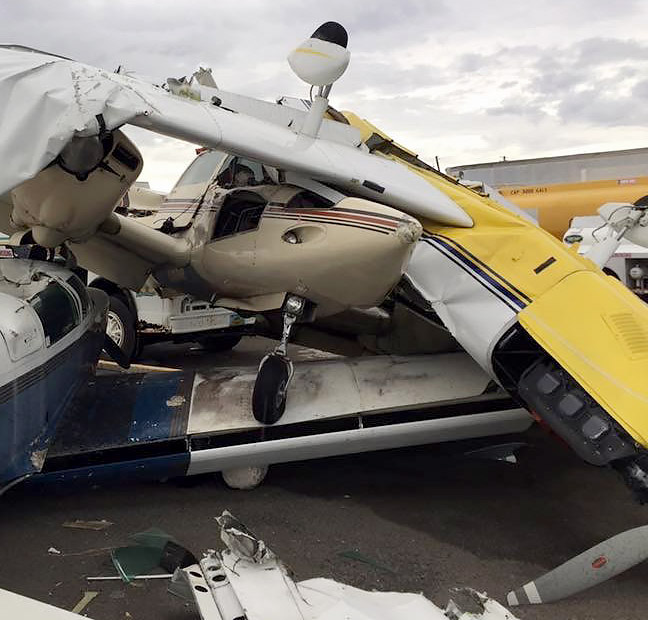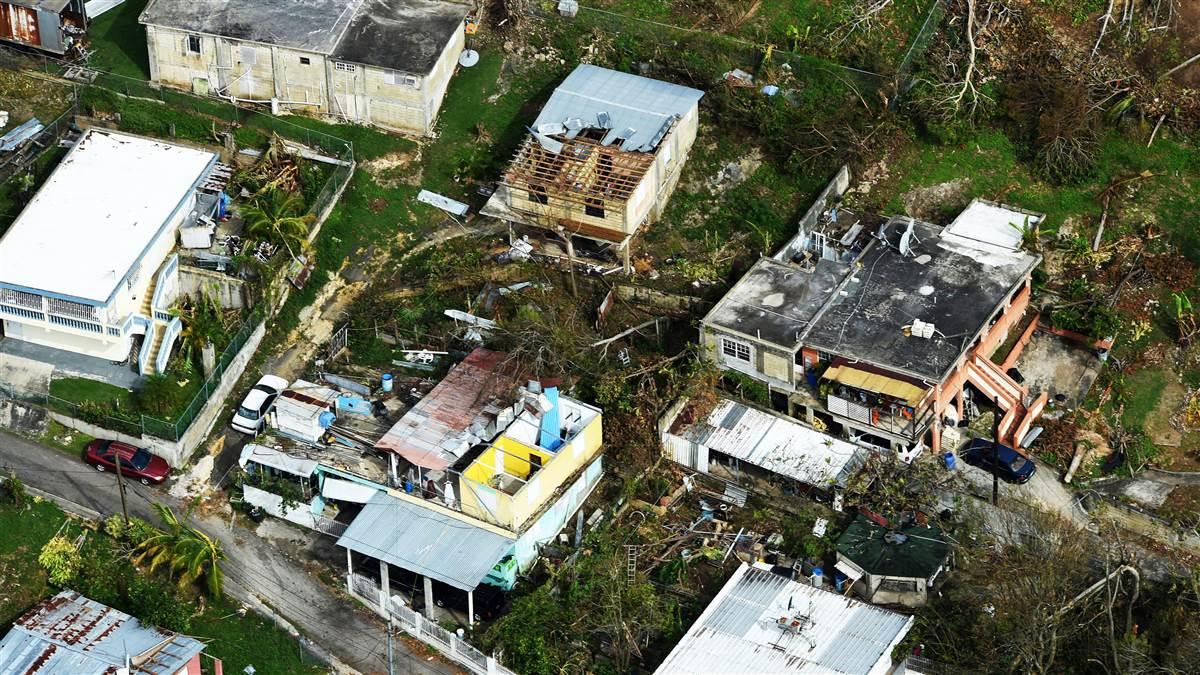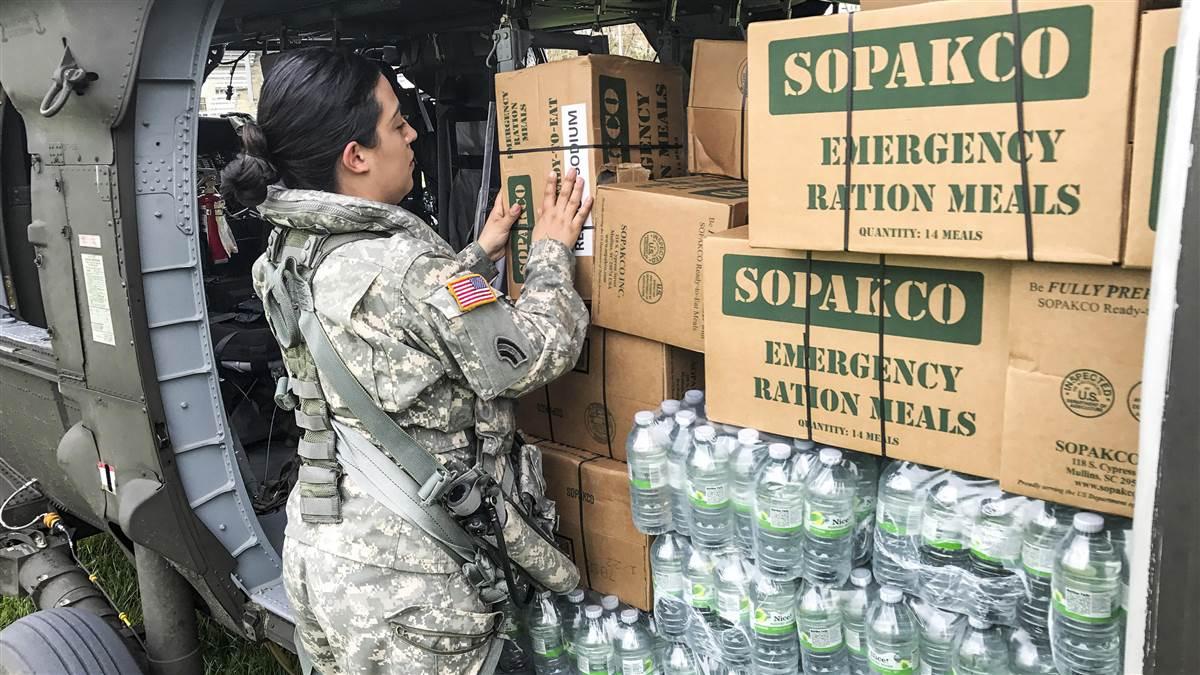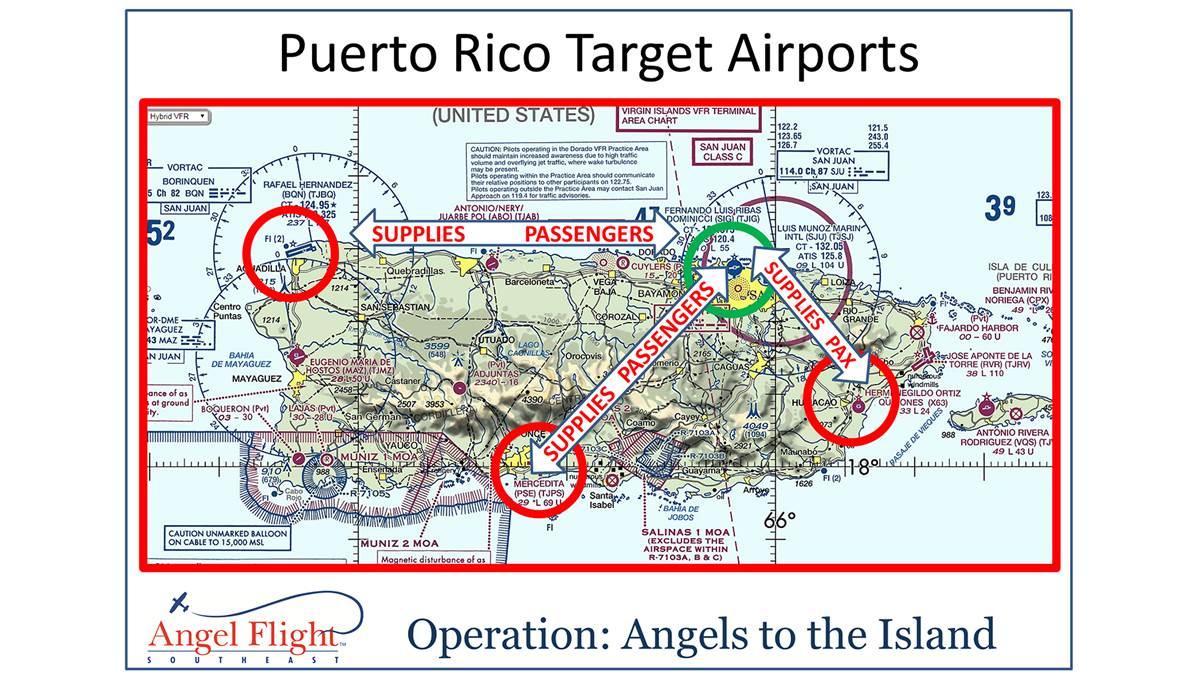GA airfield plays crucial role in Puerto Rico
Isla Grande airport ‘center of operations’
Carlos Reyes, the owner-operator of San Juan, Puerto Rico’s Isla Grande Flying School at Fernando Luis Ribas Dominicci Airport, said the general aviation airfield, also known as Isla Grande, has played a crucial role in relief efforts since Hurricane Maria’s devastating blow Sept. 20.
Reyes noted via email Oct. 3 that Isla Grande was “the center of operations for all GA” and the “only airport within the most populated area of the island to be operational the day after Hurricane Maria hit us.”
In the two weeks since the violent Category Four storm’s landfall, Reyes said he observed a beehive of activity as relief missions and personnel were flown to and from the island.
Isla Grande was to have hosted an AOPA Rusty Pilots seminar Sept. 30 before the storm wreaked havoc. Upside-down aircraft littered a ramp. A half dozen GA aircraft that were part of Reyes' flight school fleet were crumpled atop each other in a giant heap of twisted metal, and hangars were shredded after the storm roared through.

Reyes’ father started Isla Grande Flying School in 1953, and the flight school is the airport’s oldest tenant. He lamented that the airfield had previously been on the verge of closing “many times” due to commercial real estate interests, but its value was priceless during critical relief missions based there.
He added that there was “still no light nor water at home,” and efforts for the island to return to normalcy were “big, but the amount of help being flown in is impressive.” Reyes said, “GA has shined in this effort with the dispatch flexibility that commercial or military [aviation] cannot match.” He complimented "the good hearts" of the GA pilot community who were "always ready, willing, and able to get things moving."
Reyes relayed that an increasing number of local pilots had donated their time and airplanes to rebuilding efforts, and he expected additional volunteers to “fly their airplanes from the mainland today. The CAP [Civil Air Patrol] has stepped up [relief efforts]” and planned to “bring additional personnel and probably three additional airplanes” to the island.
Civil Air Patrol spokesperson Steve Cox wrote to AOPA and explained the volunteer organization’s main job in Puerto Rico was to take “hundreds of aerial images” for review by FEMA, the U.S. Air Force, and other government entities. “One of our newer tasks is to fly along the island’s road system to identify which roads are navigable and which ones still need work. This helps emergency providers know where they can readily send provisions for those in need.”
Lt. Col. Harvey Yarborough, an incident commander in Puerto Rico, said what he witnessed “was hard to fathom.” Yarborough and a team of CAP volunteers were dispatched from Alabama to aid in Hurricane Irma relief after that Category Four storm laid waste to the nearby U.S. Virgin Islands Sept. 9.

“When we came down for Irma, flying over the Virgin Islands, we were operating on fairly solid turf in Puerto Rico,” he told Cox via telephone. “But when we came back, whew, this was not what we left a few days ago,” Yarborough said.
When Hurricane Maria slammed ashore, the storm knocked out power, blocked roads, and destroyed structures in its path. Puerto Rico’s residents have been stranded largely without services, food, water, or basic necessities since the storm made landfall.
“Here… everything is devastated. I see a lot of pain out there and a lot of loss and I do take that very seriously,” he said. “You just don’t want to leave, you want to stay and do everything you can do.”
Yarborough spent a week in Puerto Rico after Hurricane Maria’s landfall there. He described a typical day that began with a 7 a.m. report followed by the first flight at 8 a.m. to “cover as much ground as possible.” The group’s volunteers had access to two CAP aircraft immediately after the storm hit and two additional aircraft were later added. Pilots and crew of the four single-engine aircraft flew roughly seven hours a day. They “processed, tabulated, and tagged as quickly as possible” the aerial images that were later reviewed by FEMA and U.S. Air Force officials.

Logistics were an issue that took some ingenuity, Yarborough explained. His planning chief was in Dallas, a mission planner was in Wisconsin, and the “quality control and debriefing officer… I don’t know where he is. He’s virtual.”
He complimented local aviators for assisting in CAP volunteer relief efforts despite the misery they faced on their own. “These guys were coming to work for CAP every day, for no pay, and their houses have no power, no water, and they are struggling with their day jobs and struggling to get enough gas for their cars to drive to come and serve.”
Angel Flight Southeast’s Nanci Schwartz said that the organization has participated in volunteer flights to move medical supplies and passengers into and out of the stricken island, particularly to airports in remote areas. “Angels to the Island” missions have included gas-powered electrical generators, food, water, medicine, and doctors. She noted that pilots are “on standby” to make short trips across the region based on requests from authorities, and can transport passengers “with serious conditions” to the U.S. mainland. They have equipped their aircraft with “whatever supplies are needed to be self-sustaining” during the charitable missions. She added that the organization has evacuated eight people so far.
A CNN video report showed long lines of residents waiting for drinking water and food ferried in by trucks Oct. 3, the same day that President Donald Trump and First Lady Melania Trump visited relief centers elsewhere on the island. Supplies were quickly emptied into waiting arms as reporter Leyla Santiago described “desperation” amid reports of some residents who ate dog food to survive.
The White House said the president was briefed on relief efforts and visited “individuals impacted by Hurricane Maria” before meeting with Puerto Rico Gov. Ricardo Rosselló, U.S. Virgin Islands Gov. Kenneth Mapp, members of the U.S. Navy and Marine Corps, and senior military personnel.
Yarborough complimented the cooperation of federal agencies and volunteers working side by side during cleanup and rebuilding efforts. “The average person on the ground cannot see how big this is.”





